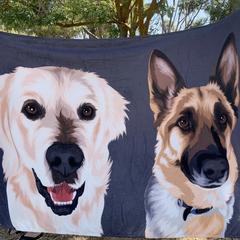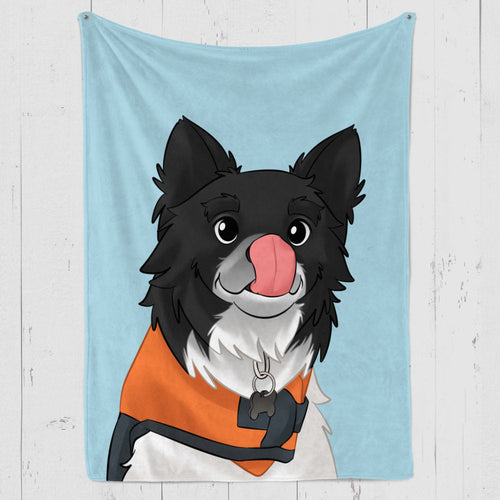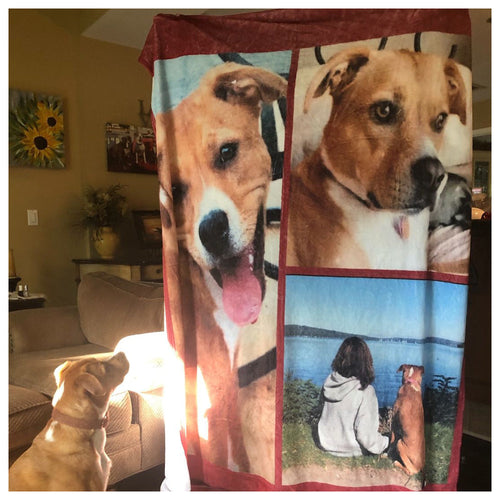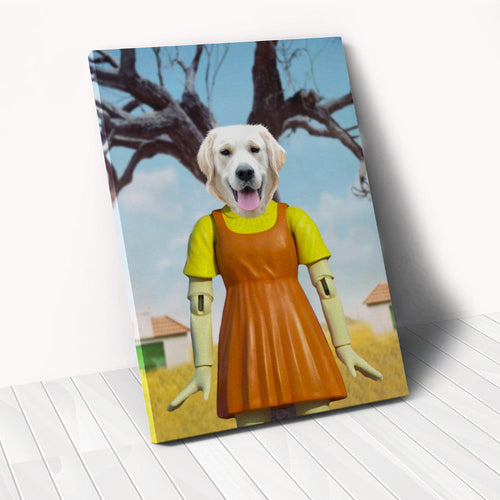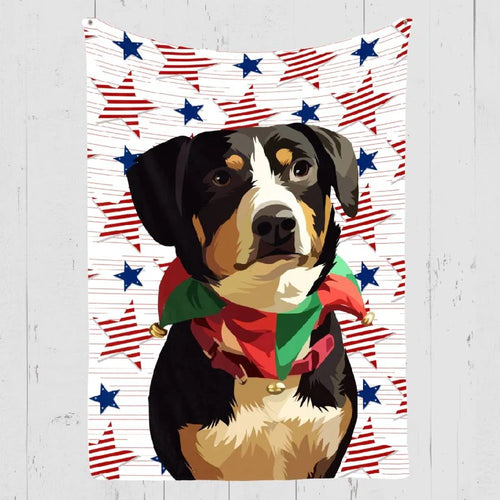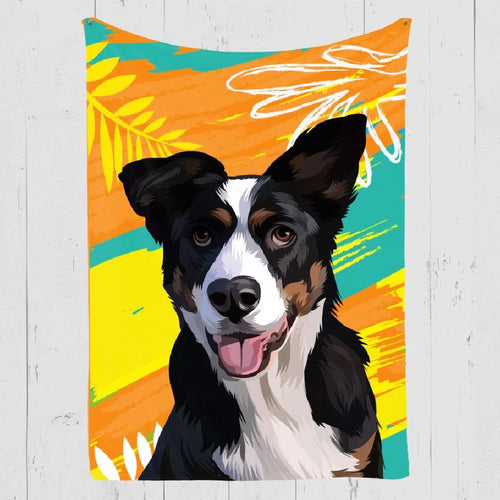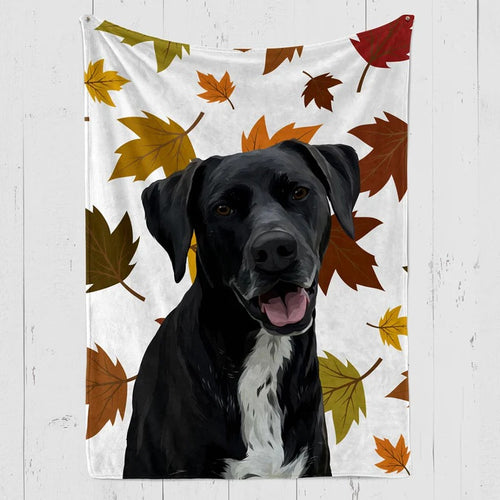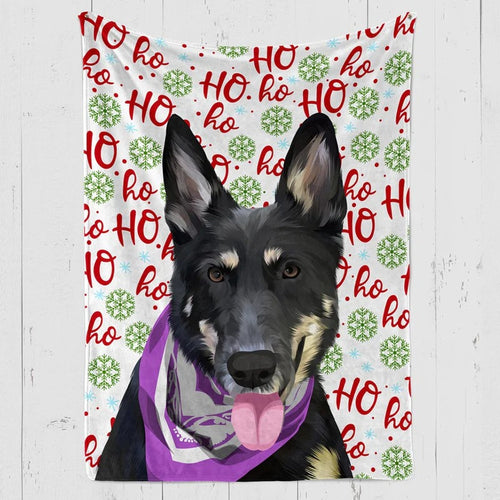
You must make it a priority to take your dog for a walk every day. Dogs benefit greatly from walks as a form of exercise. It's enjoyable and soothing to take your pet for a stroll on a glorious spring day until they abruptly stop and refuse to budge. We'll keep you updated in this blog by describing why dogs stop walking and won’t move.
1. Top Reasons why your dog stops walking and get going

When you're out for a stroll with your dog, have you ever noticed that they simply stop moving and stand still? To let you know that you are not alone. When dogs stop walking and won’t move, it can be incredibly annoying and challenging to handle, particularly if you don't know why. Here are some of the reasons your dog may not be walking anymore and some tips on how to get them going again.
2. Your Dog Suffers From Joint Pain

When their joints are in constant agony, dogs will occasionally stop walking. Hip dysplasia and arthritis are two prevalent sources of joint pain. These ailments can cause dogs great suffering. This is why it's important to understand how to spot the symptoms of joint discomfort, which include favoring one leg when standing still or yelling or whining before stopping.
If you suspect your dog has joint pain, the best course of action is to schedule an examination with your veterinarian. To identify the major cause of the discomfort and recommend a course of therapy, your veterinarian will perform a thorough examination.
3. They may be Wounded

If your dog is hurt, it might abruptly stop walking. A damaged paw pad or nail can constitute an injury, as can something more serious. Injuries can either be small or severe.
Stop walking right away and check your dog's paws and legs for any wounds if it is hurt. When you locate the wound's origin, take pictures, make an appointment with your veterinarian, and ask for first aid guidelines. You must still call your veterinarian to schedule a consultation and obtain guidance if you can't identify the injury's cause.
Make arrangements for a friend or relative to pick you and your dog up in the interim to prevent the injury from getting worse.
4. Something is Scaring Them

Many dogs stop walking and won’t move if they fear a threat in their environment. This is most frequently observed in young pups who are in their fear stage and in adult dogs walking in an unidentified setting (especially if they tend to be anxious, scared, or have experienced trauma in the past).
Many dogs will stop going anywhere if they fear a threat in their environment. This is most frequently observed in young pups who are in their fear stage and in adult dogs walking in an unidentified setting (especially if they tend to be anxious, scared, or have experienced trauma in the past).
Your dog may stoop down, pull its ears back, tuck its tail behind it, or breathe loudly or strangely if terrified.
Finding the cause of their fear is the initial thing you should do; it might be another dog nearby strolling, a weird noise, a garbage can, or a sign that you missed. The source may halt at the same location each time you pass it if it is a particular sight or fragrance.
If it is safe to do so, you can begin exposing your dog to the trigger once you have identified the cause of their fright and work on boosting their confidence. Depending on the phobia, the precise procedures needed to make your dog may vary. However, there are several fundamental activities you can take:
- Use orders to refocus your dog's attention.
- Determine the source of the fear and develop a resistance
- Provide incentives rather than rewarding bad conduct.
Call your veterinarian and make an appointment if you are aware that your dog is not walking out of fear. Your veterinarian can assist by providing detailed pointers and counsel on how to effectively and securely handle your dog's phobia.
When your dog doesn't walk, don't make these mistakes.
Here’s a list of some crucial things that you should AVOID doing whenever your dog suddenly stops walking and moving:
Don't bribe as much as you can
Your dog will suffer if you start offering goodies constantly to walk in specific regions or directions and your dog stops mid-walk for whatever reason. Your dog will eventually form the habit of not crossing the street in the middle of it just to get his hands on his favorite treats after a few days.
Never Drag them
If your dog refuses to walk in specific locations or stops in the middle of the street, you shouldn't force him. If you drag him, your dog might become more adamant about staying in one spot. Additionally, it can seriously harm your pet.
Don’t scream at them
It is never a good idea to yell at your dog if it is nervous about entering a given area. It will negatively impact him, and it can ruin your relationship.
Avoid punishing your dog
Don't chastise or penalize your dog if he won't walk in a particular location. He has stopped strolling in the middle of the road. Therefore, he may be ill or dislike the air conditioner. You must exercise patience and determine the cause of your pet dog's unusual behavior.
5. How Do I Get My Dog to Move and Not Stop Suddenly?

Additional techniques for getting your dog going again are provided below:
- To stop pulling, motivate your dog to walk on only one side.
- When passing through intriguing areas, jog more quickly.
- Implement appropriate leash training Variate your normal path for a walk.
- Reward exemplary walking manners
- Stop going somewhere and deny them access to things they want (this will make them realize that the only way to get places is with you).
Takeaway
You must realize that exhaustion, discomfort, and agony are all involved. Before losing your calm, try to find the problem. You could also ask a specialist for clarification. Love, care, and patience can help your pet get back on track and enjoy tranquil evenings with you.
Frequently Asked Questions
Does my dog have enough energy to finish the walk?
Watch for symptoms, including a slow gait, loud panting, and falling behind. Your dog can be too worn out if it is obvious. Water and rest are helpful.
If my dog doesn’t walk, do I need to carry them?
If your dog is injured or too worn out to walk, carrying them is an alternative. To avoid strain, assess your discomfort and make a decision accordingly.
When should I get my dog's walking problem fixed by a professional?
Consult a veterinarian if the walking issue continues despite resting or if it is accompanied by pain, limping, or changes in behavior. Professional assistance is necessary to arrive at an accurate diagnosis and therapy plan.
Is there a way I can detect if my dog is hurt?
Discover the causes of pet pain, how to help, and the best way to approach your vet with your concerns. Whining, whimpering, yelping, shivering, restlessness, anxiety, disturbance, difficulty moving or walking, and many other actions are common indicators of discomfort in dogs.
Is my dog's lack of activity due to nervousness or fear?
If your dog is experiencing worry or terror, he or she may stop walking. Many things a dog may face on a stroll could cause fear or anxiety, which could cause it to freeze or become motionless.
Similar Articles
Latest Review on Woof Blankets
To have such a masterpiece by my side every day is a gift for me and my memories with Rex. Thank you WoofBlankets for such an opportunity to recreate his image on a blanket.Lara o’ Miguel US, California
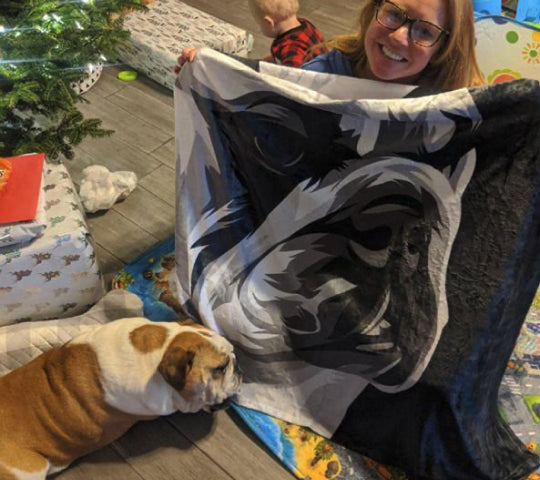
COLLECTION WORTH EVERY PENNY
BEST SELLERS
-
Woofy Single Color Custom Pet Blanket
![Woofy Single Custom Pet Blanket – Woof Blanket]()
- -41%
BlanketsSHOP NOW- Regular price
- from $64.95
- Sale price
- from $64.95
- Regular price
-
$109.95 - Unit price
- per
Sold out -
Exclusive Christmas Custom Pet Blanket
![Exclusive Custom Pet Blanket]()
- -39%
BlanketsSHOP NOW- Regular price
- from $69.95
- Sale price
- from $69.95
- Regular price
-
$114.95 - Unit price
- per
Sold out -
Christmas Custom Pet Blanket
![Christmas Custom Pet Blanket - Custom Dog Blankets]()
- -40%
BlanketsSHOP NOW- Regular price
- from $69.95
- Sale price
- from $69.95
- Regular price
-
$115.95 - Unit price
- per
Sold out -
Watercolor Pet Portraits
![]() SHOP NOW
SHOP NOW- Regular price
- from $59.95
- Sale price
- from $59.95
- Regular price
-
- Unit price
- per
Sold out -
Woofy Christmas Custom Dog Blanket
![Woofy Christmas Custom Dog Blanket]()
- -39%
BlanketsSHOP NOW- Regular price
- from $69.95
- Sale price
- from $69.95
- Regular price
-
$114.95 - Unit price
- per
Sold out -
Modern Pet Owner Portrait
![]()
- -32%
CanvasSHOP NOW- Regular price
- from $84.95
- Sale price
- from $84.95
- Regular price
-
$124.95 - Unit price
- per
Sold out -
Woof Splash Custom Pet Blanket
![Woof Splash Custom Pet Blanket]()
- -39%
BlanketsSHOP NOW- Regular price
- from $69.95
- Sale price
- from $69.95
- Regular price
-
$114.95 - Unit price
- per
Sold out -
The Admiral - Custom Pet Portrait
![The Admiral - Custom Pet Portrait Online]()
- NEW
- -25%
CanvasSHOP NOW- Regular price
- from $59.95
- Sale price
- from $59.95
- Regular price
-
$79.95 - Unit price
- per
Sold out -
Wings of Loyalty - Custom Pet Portrait
![]()
- NEW
CanvasSHOP NOW- Regular price
- from $59.95
- Sale price
- from $59.95
- Regular price
-
- Unit price
- per
Sold out -
Pet Memorial Custom Photo Collage Blanket
![Personalized pet memorial quilt with photos]()
- -41%
BlanketsSHOP NOW- Regular price
- from $64.95
- Sale price
- from $64.95
- Regular price
-
$109.95 - Unit price
- per
Sold out -
Celestial Paws - Custom Pet Portrait
![]() CanvasSHOP NOW
CanvasSHOP NOW- Regular price
- from $59.95
- Sale price
- from $59.95
- Regular price
-
- Unit price
- per
Sold out -
The Loyal Soul - Custom Pet Portrait
![]()
- NEW
SHOP NOW- Regular price
- from $59.95
- Sale price
- from $59.95
- Regular price
-
- Unit price
- per
Sold out -
Cartoonized Pet Portraits (New)
![Cartoonized Pet Custom Portraits Online]()
- -36%
SHOP NOW- Regular price
- from $59.95
- Sale price
- from $59.95
- Regular price
-
$93.95 - Unit price
- per
Sold out -
The French Sailor - Custom Pet Portrait
![]()
- -25%
CanvasSHOP NOW- Regular price
- from $59.95
- Sale price
- from $59.95
- Regular price
-
$79.95 - Unit price
- per
Sold out -
The Policeman - Custom Pet Portrait
![]()
- NEW
- -25%
CanvasSHOP NOW- Regular price
- from $59.95
- Sale price
- from $59.95
- Regular price
-
$79.95 - Unit price
- per
Sold out -
The General - Custom Pet Portrait
![]()
- NEW
- -25%
CanvasSHOP NOW- Regular price
- from $59.95
- Sale price
- from $59.95
- Regular price
-
$79.95 - Unit price
- per
Sold out -
Woof Love Custom Pet Blanket
![Woof Love Custom Pet Blanket]()
- -39%
BlanketsSHOP NOW- Regular price
- from $69.95
- Sale price
- from $69.95
- Regular price
-
$114.95 - Unit price
- per
Sold out -
Summer Time Custom Pet Blanket
![Summer Time Custom Pet Blanket]()
- -39%
BlanketsSHOP NOW- Regular price
- from $69.95
- Sale price
- from $69.95
- Regular price
-
$114.95 - Unit price
- per
Sold out -
The Ambassador - Custom Pet Portrait
![The Ambassador - Custom Pet Portrait Online]()
- NEW
- -25%
CanvasSHOP NOW- Regular price
- from $59.95
- Sale price
- from $59.95
- Regular price
-
$79.95 - Unit price
- per
Sold out -
Fall In Love Custom Pet Blanket
![Fall In Love Custom Dog Blanket]()
- NEW
- -39%
BlanketsSHOP NOW- Regular price
- from $69.95
- Sale price
- from $69.95
- Regular price
-
$114.95 - Unit price
- per
Sold out -
The Classy Lady - Custom Pet Portrait
![The Classy Lady]()
- NEW
- -25%
CanvasSHOP NOW- Regular price
- from $59.95
- Sale price
- from $59.95
- Regular price
-
$79.95 - Unit price
- per
Sold out -
The Duke - Custom Pet Portrait
![The Duke - Custom Pet Portrait]()
- NEW
- -25%
CanvasSHOP NOW- Regular price
- from $59.95
- Sale price
- from $59.95
- Regular price
-
$79.95 - Unit price
- per
Sold out -
Dog In Suit- Custom Pet Portrait
![Dash Dog In Suit- Custom Pet Portrait Online]()
- NEW
- -25%
CanvasSHOP NOW- Regular price
- from $59.95
- Sale price
- from $59.95
- Regular price
-
$79.95 - Unit price
- per
Sold out -
The Princess - Custom Pet Portrait
![]()
- NEW
- -25%
CanvasSHOP NOW- Regular price
- from $59.95
- Sale price
- from $59.95
- Regular price
-
$79.95 - Unit price
- per
Sold out -
Modern Pet Portrait with One Mug
![Modern Pet Portrait with One Mug]()
- -25%
Print MaterialSHOP NOW- Regular price
- from $99.95
- Sale price
- from $99.95
- Regular price
-
$133.95 - Unit price
- per
Sold out -
The Aristocrat - Custom Pet Portrait
![The Aristocrat - Custom Pet Portrait At Best Price]()
- NEW
- -25%
CanvasSHOP NOW- Regular price
- from $59.95
- Sale price
- from $59.95
- Regular price
-
$79.95 - Unit price
- per
Sold out -
Single Color Custom Blanket with 1 Mug
![Single Color Custom Blanket with 1 Mug]() BlanketsSHOP NOW
BlanketsSHOP NOW- Regular price
- from $99.95
- Sale price
- from $99.95
- Regular price
-
- Unit price
- per
Sold out -
Single Color Custom Blanket with 2 Pillows
![Single Color Custom Pet Blanket with 2 Pillows]()
- -21%
BlanketsSHOP NOW- Regular price
- from $99.95
- Sale price
- from $99.95
- Regular price
-
$125.95 - Unit price
- per
Sold out -
The Dog in Suit Custom Pet Mug
![]()
- -20%
MugsSHOP NOW- Regular price
- $39.95
- Sale price
- $39.95
- Regular price
-
$49.95 - Unit price
- per
Sold out -
Angel Custom Pet Mug
![]()
- -20%
MugsSHOP NOW- Regular price
- $39.95
- Sale price
- $39.95
- Regular price
-
$49.95 - Unit price
- per
Sold out -
This Human Belongs To - Custom Pet Mug
![]()
- NEW
- -20%
MugsSHOP NOW- Regular price
- $39.95
- Sale price
- $39.95
- Regular price
-
$49.95 - Unit price
- per
Sold out -
It's Not Dog Hair Custom Pet Mug
![]()
- NEW
- -20%
MugsSHOP NOW- Regular price
- $39.95
- Sale price
- $39.95
- Regular price
-
$49.95 - Unit price
- per
Sold out -
My Dog Is My Valentine Custom Pet Mug
![]()
- NEW
- -20%
MugsSHOP NOW- Regular price
- $39.95
- Sale price
- $39.95
- Regular price
-
$49.95 - Unit price
- per
Sold out -
3 Photos With Message Custom Pet Mug
![]()
- NEW
- -20%
MugsSHOP NOW- Regular price
- $39.95
- Sale price
- $39.95
- Regular price
-
$49.95 - Unit price
- per
Sold out -
My Valentine Has Four Legs- Personalized Mugs
![]()
- NEW
- -20%
MugsSHOP NOW- Regular price
- $39.95
- Sale price
- $39.95
- Regular price
-
$49.95 - Unit price
- per
Sold out -
Dog Mamma Custom Pet Coffee Mug
![]()
- -20%
MugsSHOP NOW- Regular price
- $39.95
- Sale price
- $39.95
- Regular price
-
$49.95 - Unit price
- per
Sold out -
Uncle Sam - Custom Pet Portrait
![]()
- NEW
- -25%
CanvasSHOP NOW- Regular price
- from $59.95
- Sale price
- from $59.95
- Regular price
-
$79.95 - Unit price
- per
Sold out -
The Revolutionary Emperor - Custom Pet Portrait
![]()
- NEW
- -25%
CanvasSHOP NOW- Regular price
- from $59.95
- Sale price
- from $59.95
- Regular price
-
$79.95 - Unit price
- per
Sold out -
The Princess Paws - Custom Pet Portrait
![]()
- -25%
CanvasSHOP NOW- Regular price
- from $59.95
- Sale price
- from $59.95
- Regular price
-
$79.95 - Unit price
- per
Sold out -
The Dark Crusader Knight - Custom Pet Portrait
![]()
- -25%
CanvasSHOP NOW- Regular price
- from $59.95
- Sale price
- from $59.95
- Regular price
-
$79.95 - Unit price
- per
Sold out

